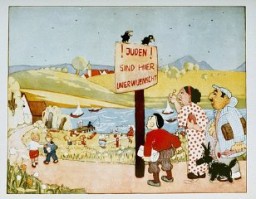You searched for: %5B%E5%B8%81%E6%9C%AC%E4%BD%8D%EF%BC%9Ax946.COM%5D%E9%97%B5%E8%A1%8C%E6%88%BF%E5%AD%90%E5%9D%87%E4%BB%B7%5B%E5%B8%81%E6%9C%AC%E4%BD%8D%EF%BC%9Ax946.COM%5D
<< Previous | Displaying results 31-40 of 147 for "%5B%E5%B8%81%E6%9C%AC%E4%BD%8D%EF%BC%9Ax946.COM%5D%E9%97%B5%E8%A1%8C%E6%88%BF%E5%AD%90%E5%9D%87%E4%BB%B7%5B%E5%B8%81%E6%9C%AC%E4%BD%8D%EF%BC%9Ax946.COM%5D" | Next >>
-
Dr. Robert Ritter visits a "Gypsy camp"
PhotoDr. Robert Ritter talks to several residents in a Zigeunerlager ("Gypsy camp"). Hamburg, Germany, 1940. During the Nazi era, Dr. Robert Ritter was a leading authority on the racial classification of people pejoratively labeled “Zigeuner” (“Gypsies”). Ritter’s research was in a field called eugenics, or what the Nazis called “racial hygiene.” Ritter worked with a small team of racial hygienists. Among them were Eva Justin and Sophie Ehrhardt. Most of the people whom Ritter studied and…

-
Eva Justin interviews a Romani woman interned in a "Gypsy camp"
PhotoA color photograph of Eva Justin interviewing a Romani woman interned in a "Gypsy camp." Vienna, Austria, 1940. During the Nazi era, Dr. Robert Ritter was a leading authority on the racial classification of people pejoratively labeled “Zigeuner” (“Gypsies”). Ritter’s research was in a field called eugenics, or what the Nazis called “racial hygiene.” Ritter worked with a small team of racial hygienists. Among them were Eva Justin and Sophie Ehrhardt. Most of the people whom Ritter studied and…

-
A family interned in a "Gypsy camp"
PhotoA family stands outside of their wagon while interned in a Zigeunerlager ("Gypsy camp"). In the background, children are crowded around Eva Justin. Justin worked for the Center for Research on Racial Hygiene and Demographic Biology. Schleswig-Holstein, Germany, 1938. During the Nazi era, Dr. Robert Ritter was a leading authority on the racial classification of people pejoratively labeled “Zigeuner” (“Gypsies”). Ritter’s research was in a field called eugenics, or what the Nazis called…

-
Georg Grosz
ArticleGeorg Grosz was a German artist of the Dada movement. His books, which had many of his best-known plates, were burned in Nazi Germany in 1933. Learn more.

-
Halle
ArticleHalle an der Saale was a satellite camp of Buchenwald concentration camp. It was established by the Nazis in Saxony, Germany in 1941.
-
Lend-Lease
ArticleLearn more about the Lend-Lease Act, which was the American policy that extended material aid to the WWII Allied powers from 1941-1945.

-
The 69th Infantry Division during World War II
ArticleThe 69th Infantry Division participated in major WWII campaigns and is recognized for liberating the Leipzig-Thekla subcamp of Buchenwald in 1945.
-
Lithuania
ArticleAs part of the Holocaust, the Germans murdered about 90% of Jews in Lithuania. Read more about the tragic experience of Lithuanian Jews during World War II.

-
Antisemitism
ArticleThe word antisemitism means prejudice against or hatred of Jews. The Holocaust is history’s most extreme example of antisemitism. Learn more.

-
Blitzkrieg (Lightning War)
ArticleBlitzkrieg, meaning "Lightning War" in German, was Germany’s strategy to avoid a long war in the first phase of World War II in Europe.

